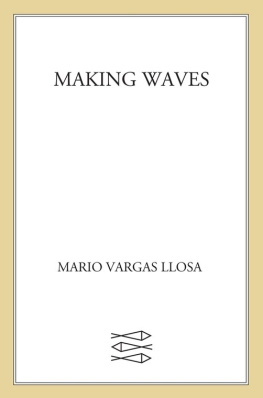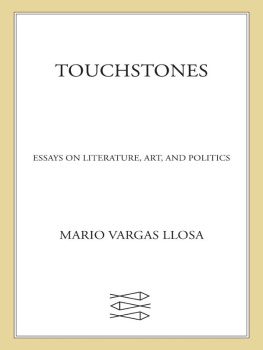Mario Vargas Llosa
Three Plays: The Young Lady from Tacna, Kathie and the Hippopotamus, La Chunga
I would like to thank everyone who helped me with these translations, especially Mario Vargas Llosa, Marilyn Watts, and the actors who took part in the rehearsed readings at the Gate Theatre.
D. R. G.-Y.
THE YOUNG LADY FROM TACNA
Lies that tell the truth
Although generally one might say that The Young Lady from Tacna explores such themes as old age, pride, and individual destiny, there is one underlying and pervasive idea encompassing all the others, which has turned out to be, I believe, the backbone of this play: it is the question of how and why stories come into being. I dont mean how and why they are written, for although Belisario is a writer, literature is only one area of the vast field of story-telling, present in every culture, including those that have no written language.
It is as fundamental an activity for the individual as it is for societies as a whole it is in fact an essential part of human existence, a means of enduring the burden of life. But why does man need to tell stories? Why does he need to be told them? Perhaps because, through helping him contend with death and failure, as it did Mama, it gives him an illusory sense of permanence and relief. It is a means of retrieving, through a system controlled by the memory with the help of the imagination, a past that, when it was actually being lived, had all the appearance of chaos. Story-telling, fiction, thrives on what real life in all its bewildering complexity and unpredictability inevitably lacks: a sense of order, of coherence, of perspective, a period of time in isolation in which a hierarchy of facts and events can be determined, the relative importance of the characters, causes and effects, and the links between the actions. In order to understand what we are, as individuals and as nations, our only recourse is to come out of ourselves, and, with the help of memory and imagination, throw ourselves into the world of fiction in which we are portrayed paradoxically as something similar to, yet different from, what we really are. Fiction is the complete man, a perfect blend of truth and falsehood.
Stories are seldom faithful to what they appear to be relating, at least in any quantitive sense: the word, whether spoken or written, is an entity in itself and distorts what it is supposedly trying to communicate. Memory is deceptive, selective and partial. The gaps it leaves, which are generally not accidental, are filled by the imagination: every story therefore has some elements added to it. These are never arbitrary or fortuitous, because they are governed by that strange force which is not the logic of reason but that of dark unreason. Creativity is often little more than a form of retaliation against a life we find hard to live: we perfect it, or debase it in accordance with our own cravings and feelings of bitterness; we rework the original experience, modify what actually happened in order to satisfy the demands of our frustrated desires, our broken dreams, our feelings of joy or anger. In this way, the art of telling lies, which is the art of story-telling, is also, surprisingly, the art of communicating a deep-seated hidden truth about humanity. An imperceptible mixture of authentic and concocted events, of real and imaginary experiences, story-telling is one of the few forms perhaps the only one capable of depicting man in his entirety, both in his everyday life and in his fantasies, as he is and as he would like to be.
The criterion of truth is to have invented it oneself, wrote Giambattista Vico, who maintained, in an age when scientific cant was rife, that man was only really capable of understanding what he himself created: that is to say, the history of humanity rather than the physical world of nature and the universe. I dont know if that is true or not, but his principle is a marvellous vindication of the truth in story-telling, the truth in literature. This truth doesnt lie in any similarity or slavish adherence of the spoken or written word (what is created) to a higher objective reality, but in itself, as something created from the raw material of truth and falsehood which make up the ambiguous totality of human experience.
Ive always been fascinated by that strange process: the birth of a work of fiction. Ive been writing now for quite a number of years, and it has never ceased to intrigue and surprise me, that slippery and unpredictable path, along which the mind travels, as it probes memories, calling up the most secret desires, impulses, whims, in order to invent a story. While I was writing this play, I was sure I was going to re-create (taking quite a few liberties on the way) the story of a familiar character, who was connected with my childhood, but I never suspected that under this pretext I was in fact attempting to tell the story of that elusive, transitory, changeable yet eternal process through which stories themselves come into being.
Mario Vargas Llosa
MAMAE, an old lady of about a hundred
GRANDMOTHER CARMEN, her cousin, somewhat younger and better preserved
GRANDFATHER PEDRO, Carmens husband
AGUSTIN, their elder son, in his fifties
CESAR, their other son, somewhat younger than his brother
AMELIA, their daughter, younger than Csar, and in her forties
BELISARIO, Amelias son
JOAQUIN, a Chilean officer, young, handsome and dapper
SEORA CARLOTA, elegant and beautiful, in her thirties
The stage is divided into two sets: the grandparents house in Lima during the 1950s, and Belisarios study, which can be anywhere in the world in 1980.
The majority of the action takes place in the grandparents house: the living room cum dining room of a modest middle-class flat. There are two doors, one leading on to the street, the other to the inner part of the house. The furniture reflects the familys financial straits, which are verging on the desperate. The essential pieces of furniture are the old armchair where Mama has spent the best part of her latter years, the little wooden chair, which she uses as a walking aid, an old wireless set, and the table where the family supper takes place in Act Two. There is a window on to the street, through which trams can be heard going past.
The set should not be realistic. It is as Belisario remembers it. It is a figment of his imagination and so objects and characters should take on a reality separate from their real-life counterparts. Besides, in the course of the action, the same set is used to represent various different locations: a drawing room in the house in Tacna where Grandmother and Mama lived when they were young; the dining room of the house in Arequipa, when Grandfather was managing the Caman cotton plantation in the twenties; the house in Bolivia where Mama told Belisario stories during the 1940s, and Pedros lodgings in Caman where he wrote his wife the letter Mama read in secret. The set has also to represent locations that are purely imaginary, such as Padre Venancios confessional. So it is appropriate for it to have a certain indeterminate quality which facilitates (or at any rate doesnt hinder) these transformations.
Belisarios study consists of a plain wooden table covered in papers, notebooks, pencils, and perhaps a portable typewriter. However simple it is, it is important that it should reflect a man whose life revolves round his writing, who spends most of his time there; it is the place where, apart from writing, sleeping and eating, he delves into his past life, confronts himself with it and speaks to his phantoms. Belisario may be between forty and fifty, or even older. Either way, he has had considerable experience as a writer, and what happens to him in the course of this story will almost certainly have happened to him on previous occasions. Judging by his clothes and general appearance, he is a man without resources, disorganized and careless.


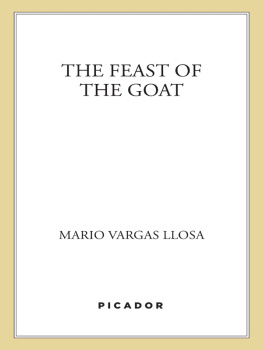
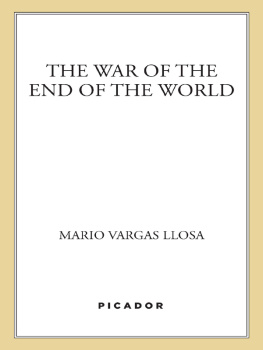

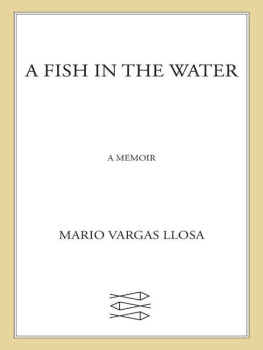
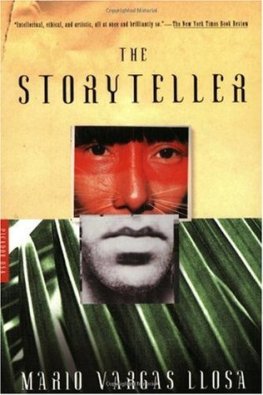

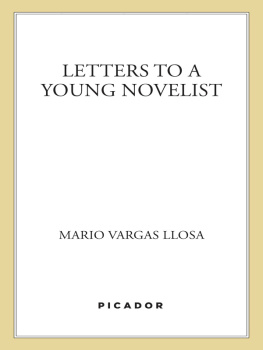
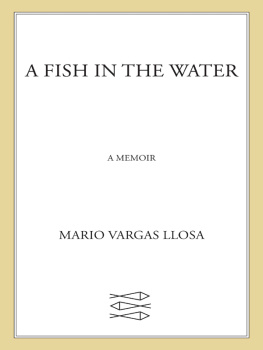
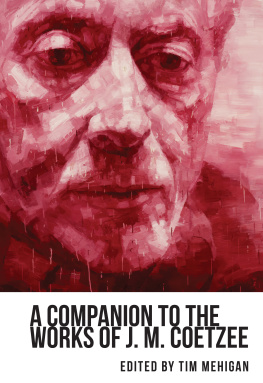
![Mario Vargas Llosa [Mario Vargas Llosa] - Captain Pantoja and the Special Service](/uploads/posts/book/142220/thumbs/mario-vargas-llosa-mario-vargas-llosa-captain.jpg)
